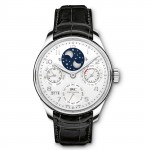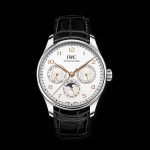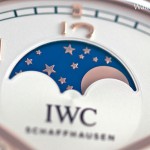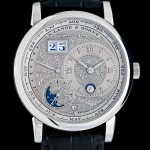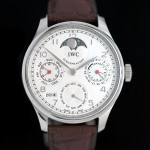In-Depth: The IWC Portugieser Eternal Calendar
A happily-ever-after calendar with a 45 million-year moon phase.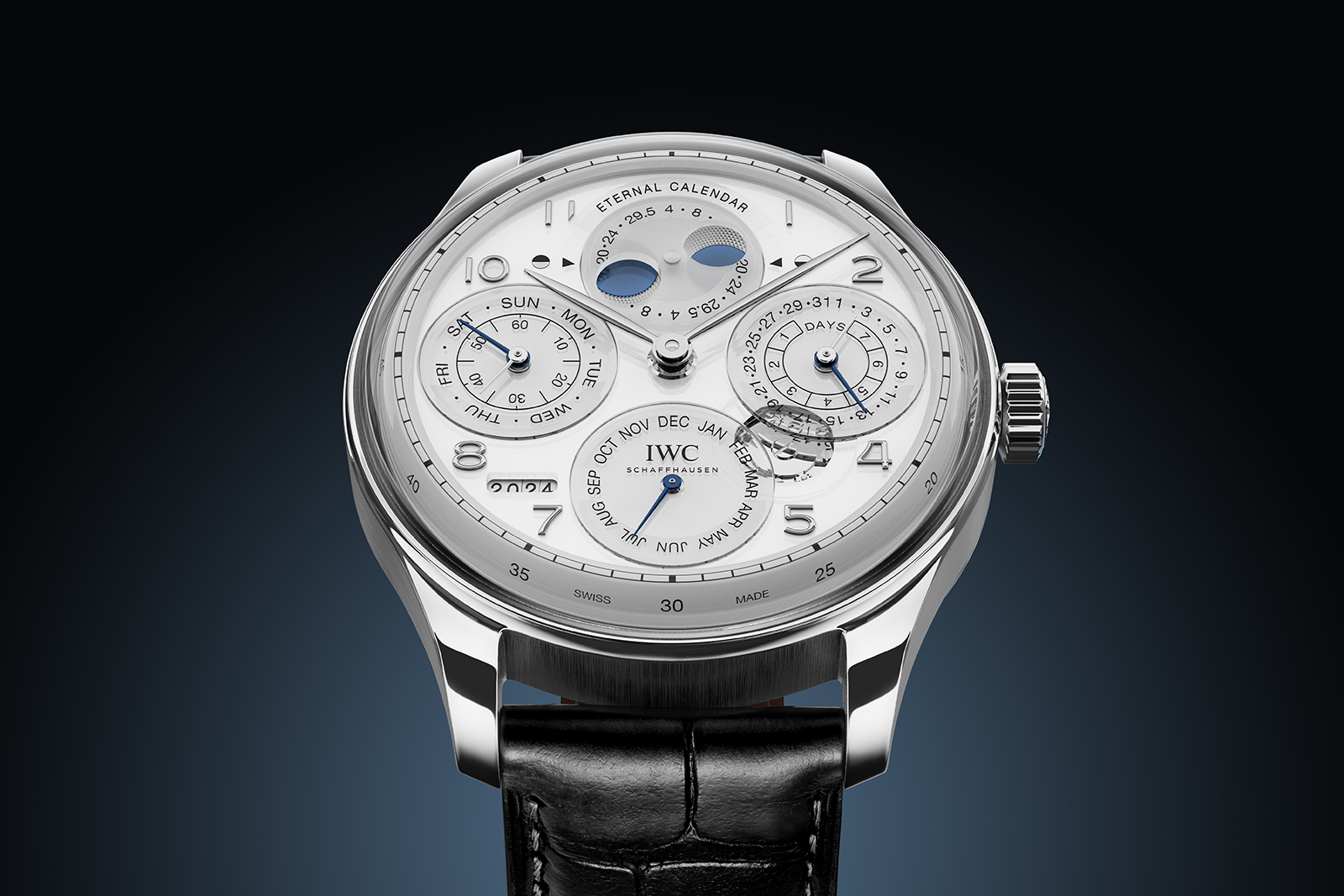
Perhaps the complication most associated with IWC, the perpetual calendar with its distinctive four-digit year display was introduced in 1985 in the Da Vinci. Today IWC takes the “perpetual” concept to its maximum with the Portugieser Eternal Calendar that boasts a supercharged perpetual calendar, otherwise known as a secular calendar, requiring no adjustment for a thousand years. In addition, it is equipped with a moon phase of unprecedented accuracy – a day in 45 million years.
Initial thoughts
Even though it appears similar to the standard Portugieser Perpetual Calendar – though it is slightly thicker and wider – the Eternal Calendar is an appealing and note-worthy proposition in terms of its technical merits. The rare complication, however, comes at preposterously steep price.
Discreetly dressed in the classic Portugieser case, but the Eternal Calendar reveals a modern twist in the form of the glass dial that shows off the calendar works underneath. To accomplish that, the movement employs a sapphire bridge in the calendar module, marking the first time IWC is using the material as a structural element in a calibre. The extensive use of sapphire hints at the impressive technicality of the movement, giving a sense of tangibility to the mechanics within.
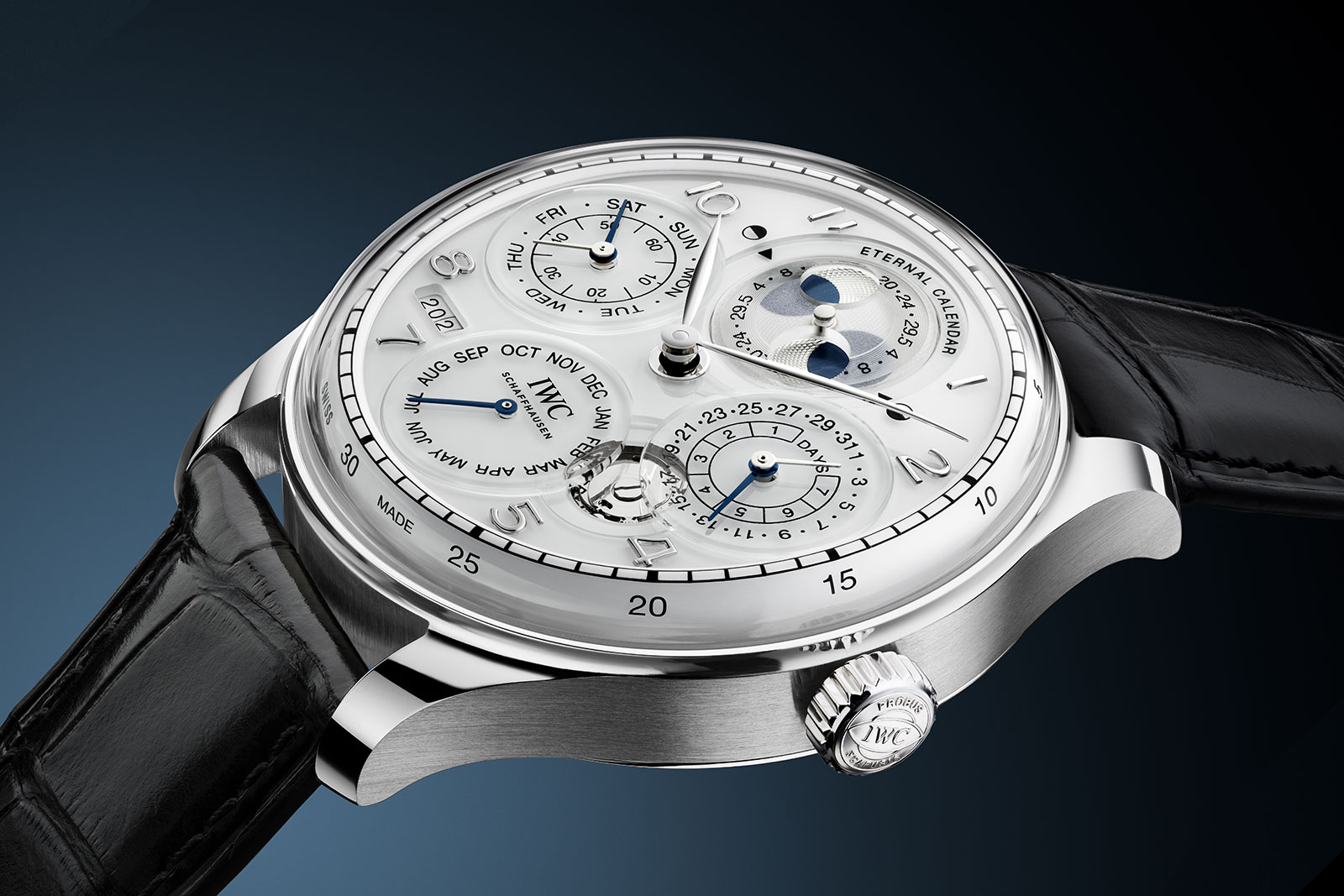
And the mechanics are certainly worth admiring. An “eternal” or secular calendar complication is appealing, for both the mechanical inclined and even the plain romantic who wants something that will go on forever, at least in theory. As the calendar needs virtually no adjustment over the course of millennia, the complication is an immortal, self-correcting device, impervious to the passage of time despite tracking it.
However, the appeal of the complication diminishes since the price tag is CHF150,000. Secular calendars are rare – amongst the handful of brands having pulled it off are Svend Andersen and Franck Muller – but arguably not so complex as to justify such a price.
From Kurt Klaus to eternity
Invented in the early 1980s the legendary Kurt Klaus, IWC’s longtime movement-constructor-in-chief who’s now 90 and retired, the perpetual calendar module was originally conceived as an add-on to the Valjoux 7750, a workhorse with ample torque for driving the calendar.
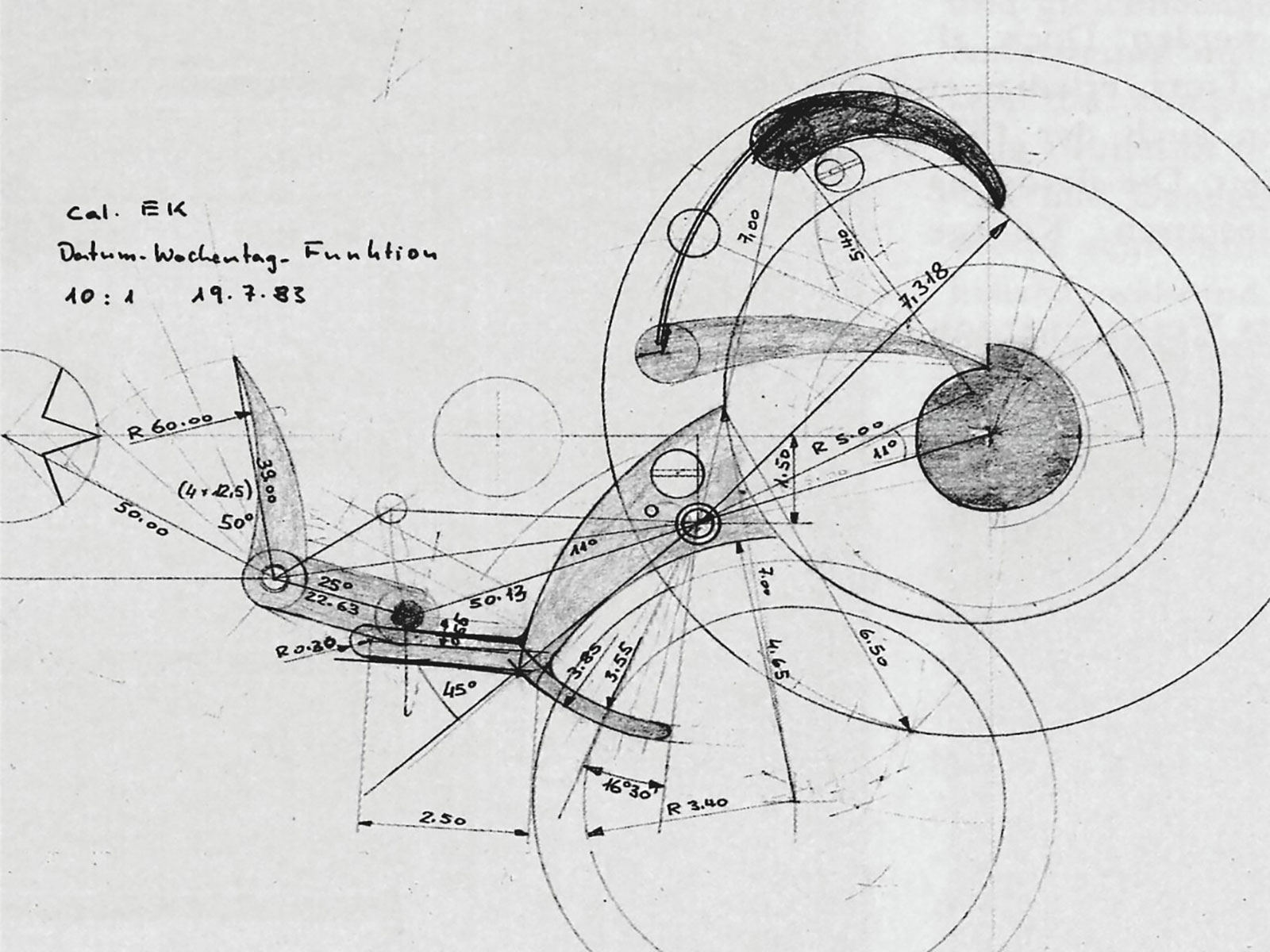
Sketches of the original IWC Kurt Klaus Perpetual Module
The original Kurt Klaus calendar module is a pseudo-classical perpetual calendar, as it uses a traditional 48-month cam and grand lever. The key innovation was the lack of case correctors, instead all calendar functions were operated by the crown. That, however, came along with a constraint: the calendar could only be set forwards.
The system is mechanically programmed to track the years, months, dates, days and moon phase simultaneously. If the wearer wants to adjust the calendar, he does so by simply turning the crown, which also advances the day of the week and moon phase accordingly.
The original calendar module has enjoyed a number of refinements and subtle modifications over the years, although the fundamental construction and concept have remained the same. Amongst the improvements are safety systems that protect the mechanism from misuse. A more palpable refinement was related to the accuracy of the moon phase: the original module had a moon phase display accurate to the the industry norm of one day in 122 years, whereas the second iteration introduced in 2003 reduced the error to one day in 577.5 years.
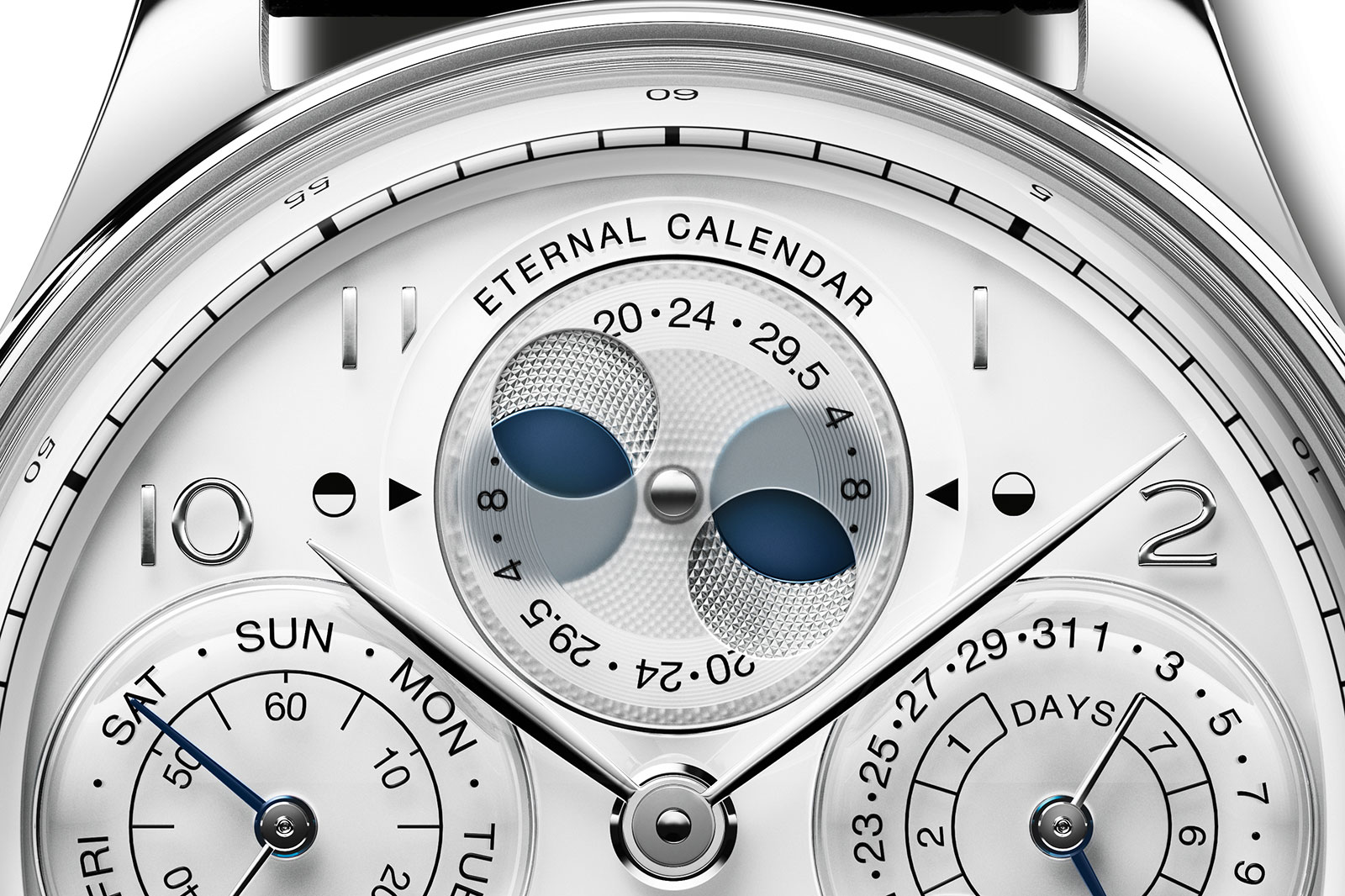
The trademark IWC moon phase indication shows the moon phase in both hemispheres
In contrast, the double moon display of the Eternal Calendar only deviates by just one day in 45 million years. The gearing required for this feat was calculated by IWC’s engineers and constructors using computer simulations that tested over 22 trillion combinations.
The accuracy is even more impressive when put in perspective. The Guinness World Record for the most precise moon phase display was awarded in 2014 to Andreas Strehler, whose Lune Perpétuelle has a deviation of one day in two million years. The Eternal calendar moon display is over 22 times more accurate.
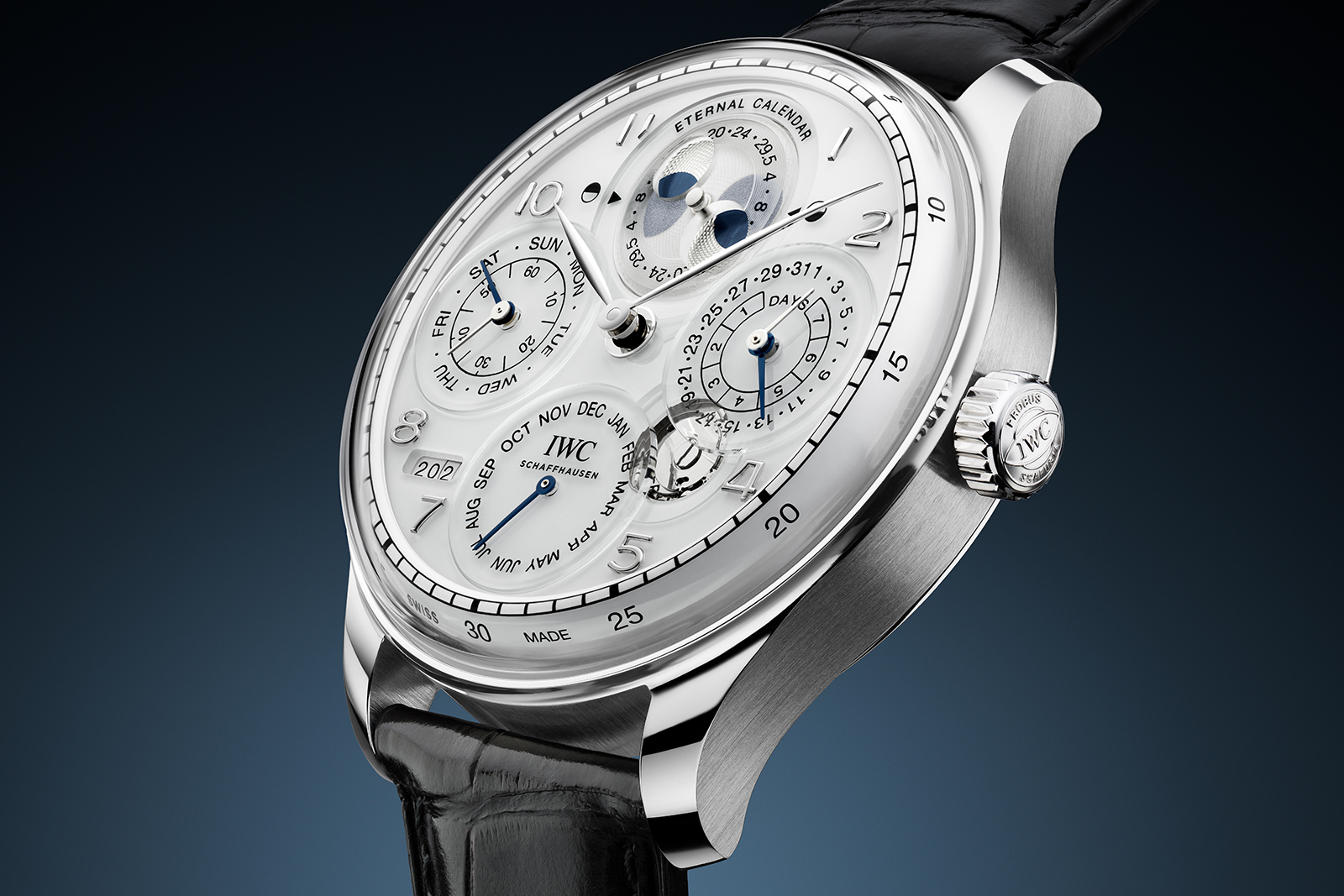
Achieving forever
The mode name, Portugieser Eternal Calendar, is a giveaway – the watch is all about forever. Better known as a secular calendar, the eternal calendar accounts for larger cycles in the Gregorian calendar that go beyond the typical four-year leap year cycle that conventional perpetual calendars can deal with.
The leap year cycle in the Gregorian calendar, made up of three common years and one leap year, is itself subordinate to a secular correction system, which skips a leap year every 100 years. The reason for that lies in the rules of the Gregorian calendar, which was named after Pope Gregory XIII who introduced the calendar in the 16th century.
Any year divisible by four is a leap year, 2024 is a leap year for instance, but with several exceptions. If a year is a multiple of 100 (like 2100, 2200, and 2300) then it is a common year, although this is still subject to the divisible-by-four rule. An exception to the rule is any year divisible by 400 (like 2000 or 2400) is a leap year.
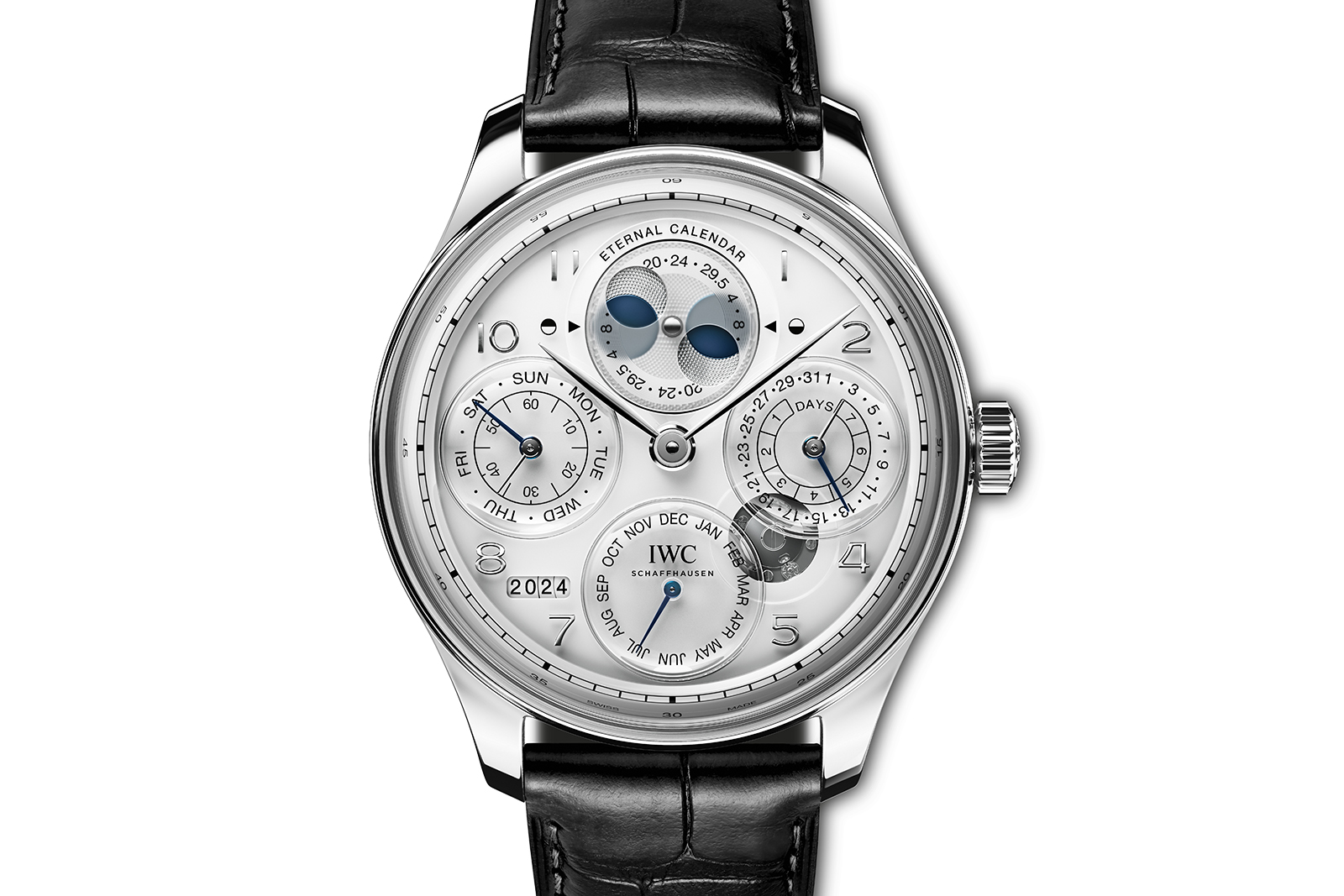
Part of the secular module is visible at 4:30 on the dial
These secondary rules result in a larger cycle known as the secular leap year cycle, which is not taken into account by classical perpetual calendars due to the complex gearing required. As a result, most perpetual calendars require a “hard reset” by a watchmaker in 2100.
A secular calendar, on the other hand, requires virtually no correction, essentially forever, since it accounts for all the known exceptions of the Gregorian calendar. IWC claims the Eternal Calendar needs no adjustment up to at least the year 4000, as it has yet to be decided whether that will be a leap year or not.
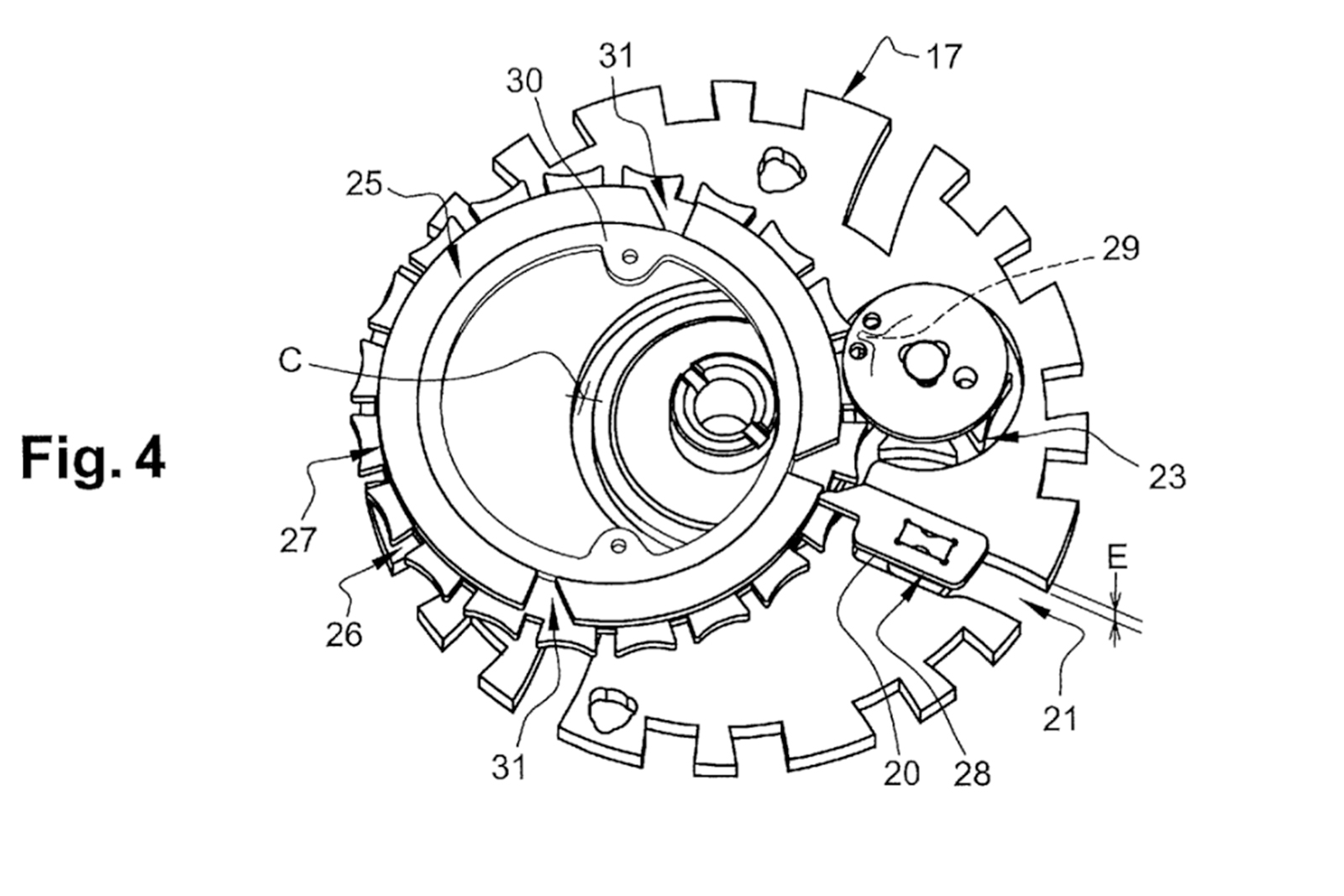
The possible embodiment of the secular module extracted from Swiss patent CH 718 699 A1.
Conventional perpetual calendars are already highly intricate systems, so a secular calendar should in theory be proportionately more complex.
This is not the case with the Eternal Calendar, which only adds about eight parts to the Kurt Klaus calendar module. The approach does draw on traditional perpetual calendar constructions, but innovates in terms of the simplicity in accommodating the secular cycle.
The secular sub-module (as illustrated by Swiss patent CH 718 699 A1 granted in 2022) is cleverly integrated into the 48-month cam mobile that makes a full revolution every four years. A reducing Maltese cross gear set drives a secular cam, which only makes a full revolution once every 400 years. A sprung sliding beak is guided by the notches in both the secular cam and 48-month cam. It slides inwards and outwards every 100 years, allowing the calendar to skip three leap years over the course of four centuries.
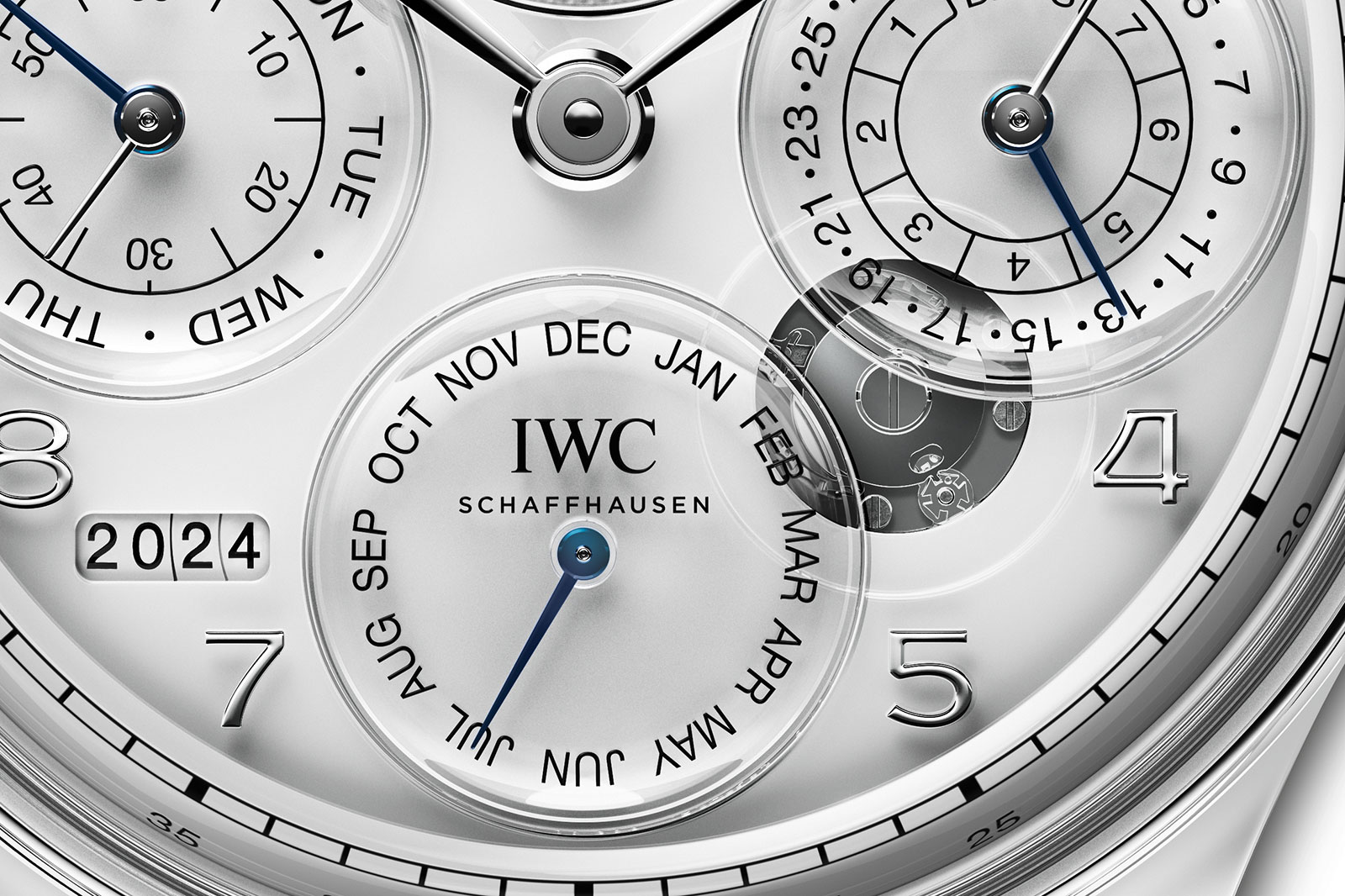
A closer look to the secular module through the sapphire openings
The rest of the perpetual module remains basically unchanged, which suggests the secular module add-on is cost-effective. The simplicity also indicates it should prove reliable. Although inserting a sub-module into an existing mechanism can sometimes be trickier than constructing a new module from the ground up, this approach has the advantage of a base module that has proven itself over four decades, making it less prone to unexpected issues.
Because the secular calendar is an add-on to the existing perpetual module, the dial retains the same layout. Visually it is set apart by the transparent glass dial that is domed, resulting in an outer minute scale that echoes the curve of the crystal.
In terms of dimensions, the Eternal Calendar is almost indistinguishable from the standard perpetual calendar – it is larger and thicker by fractions of a millimetre – which is a good thing given that the base model is already a large watch.
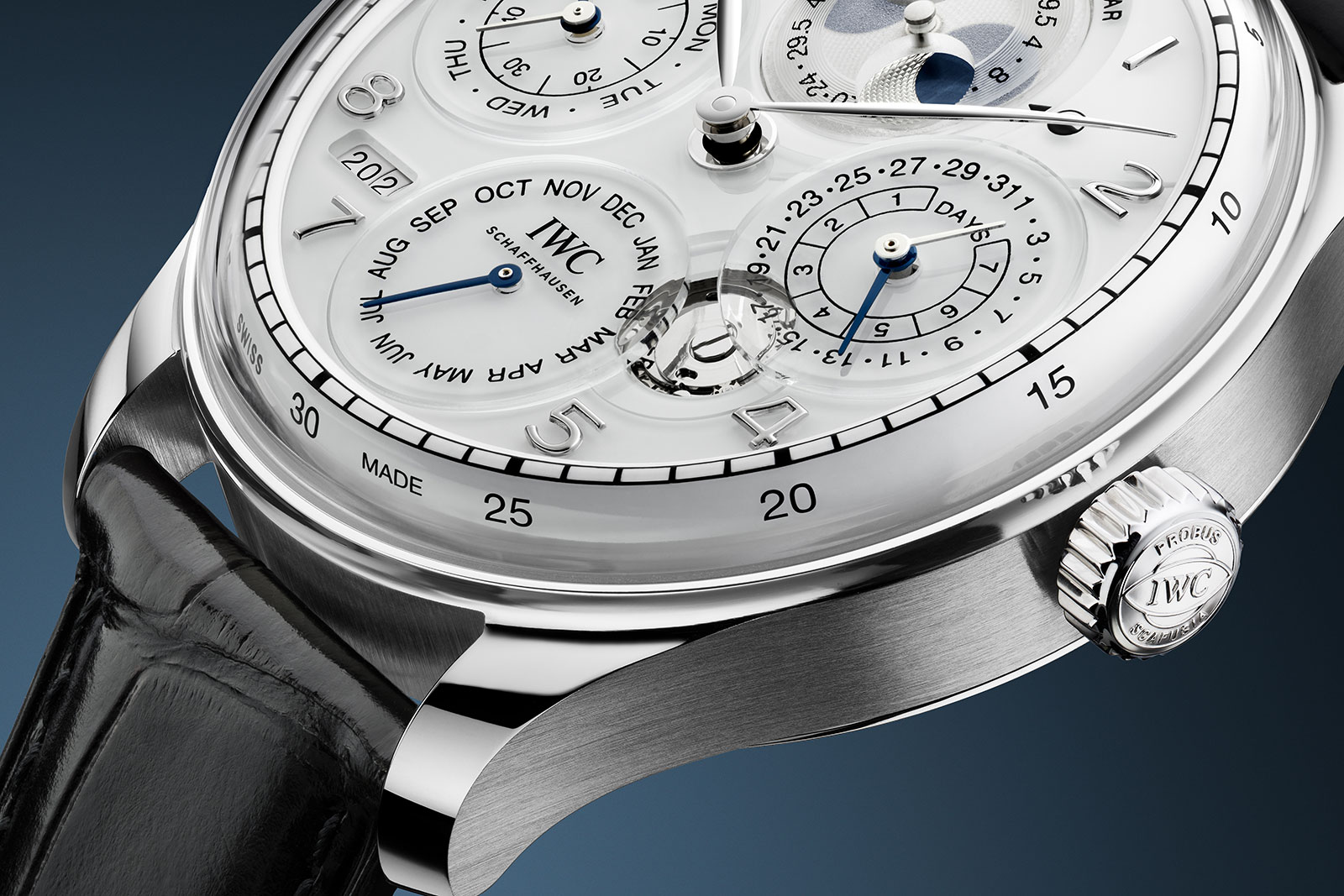
The Eternal Calendar is also identical to the standard Portugieser perpetual in terms of the base movement. Known as the cal. 52640, the Eternal Calendar movement relies on the seven-day automatic base movement that’s part of the 52000-family. A notably good-looking calibre despite its recent origins and industrial decoration, the 52000-series of movements boast a layered construction and large diameter of over 38 mm, a unique composition that is distinctive to IWC.
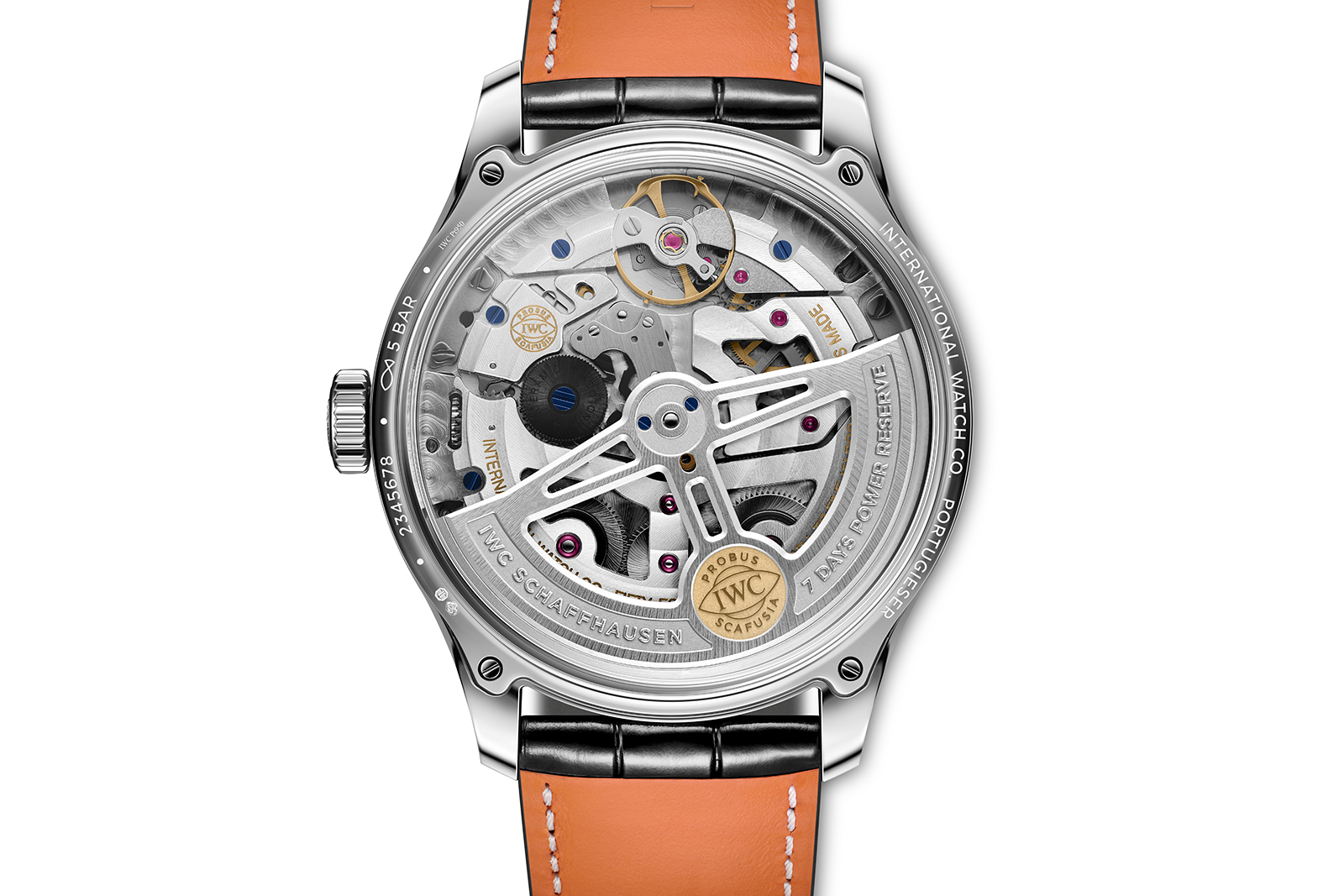
The flagship family of movements features another landmark IWC invention – the Pellaton winding system that relies on twin pawls for bi-directional winding. Now crafted from hard-wearing ceramic, the system is reasonably shock resistant and highly efficient.
To accomplish the seven-day power reserve, the cal. 52640 features two sequential barrels that develop steady torque throughout the weeklong running time. The free-sprung balance beats at a modern frequency of 4Hz and features two rate regulation screws on its rim.
Although the movement doesn’t look all that different from other 52000-family iterations (the glass parts sit on the dial side, leaving the case back with a classical view), it is still finished in typical IWC fashion, which means thoughtful machine finishing. Many details are attended to, and they include blued screws, Geneva stripes on the bridges, milled anglage, and perlage on the main plate. The large rotor is 18-carat gold and ornately cast with the IWC emblem.
Key facts and price
IWC Portugieser Eternal Calendar
Ref. IW505701
Diameter: 44.4 mm
Height: 15 mm
Material: Platinum
Crystal: Sapphire
Water resistance: 50 m
Movement: Cal. 52640
Functions: Hours; minutes; seconds; power reserve indicator; and secular perpetual calendar with date, day, month, four-digit year, perpetual moon phase for both northern and southern hemispheres
Frequency: 28,800 beats per hour (4 Hz)
Winding: Automatic
Power reserve: 168 hours (7 days)
Strap: Black alligator leather made by Santoni with platinum buckle
Limited edition: No
Availability: At IWC boutiques and retailers
Price: CHF150,000
For more, visit IWC.com.
Back to top.

